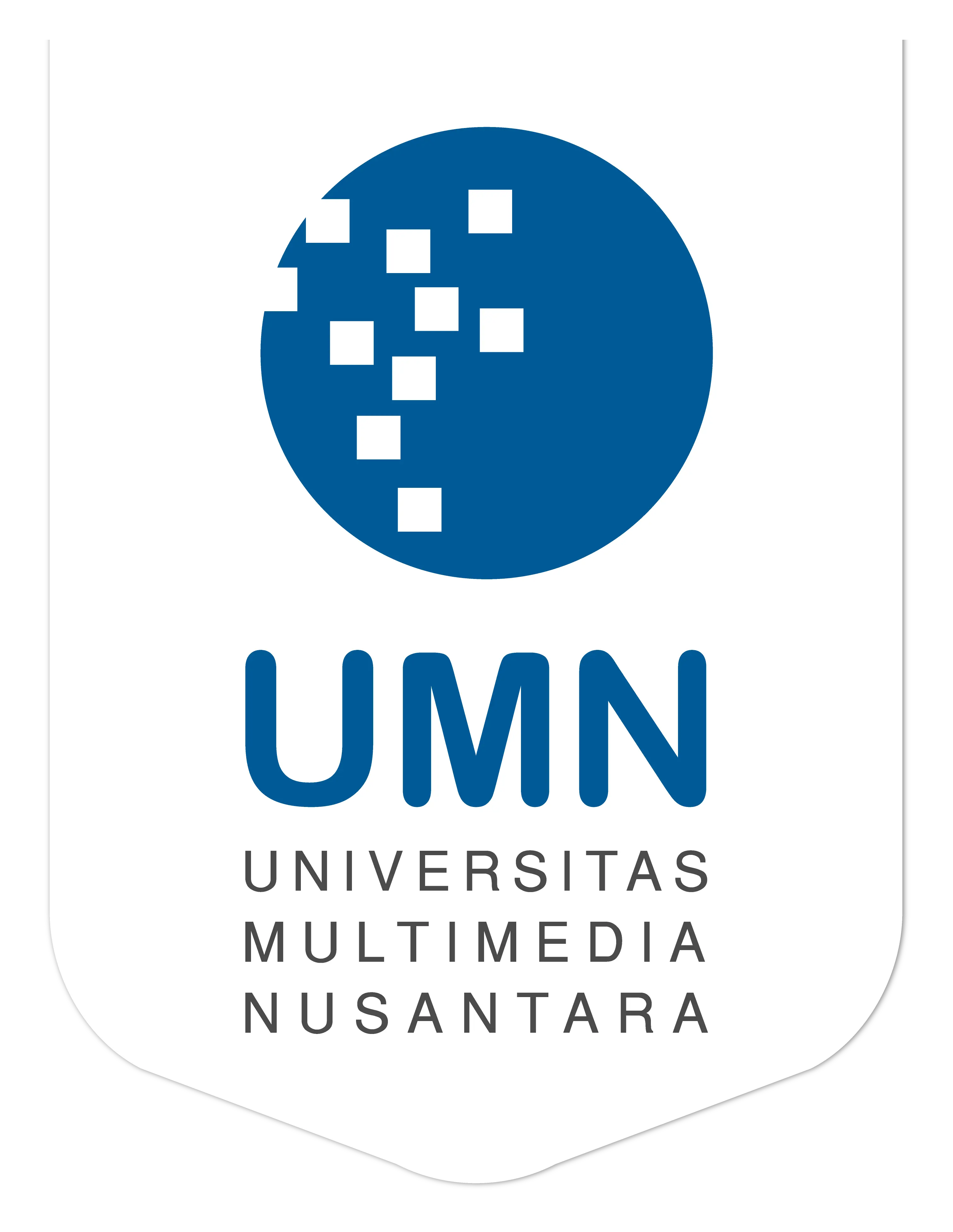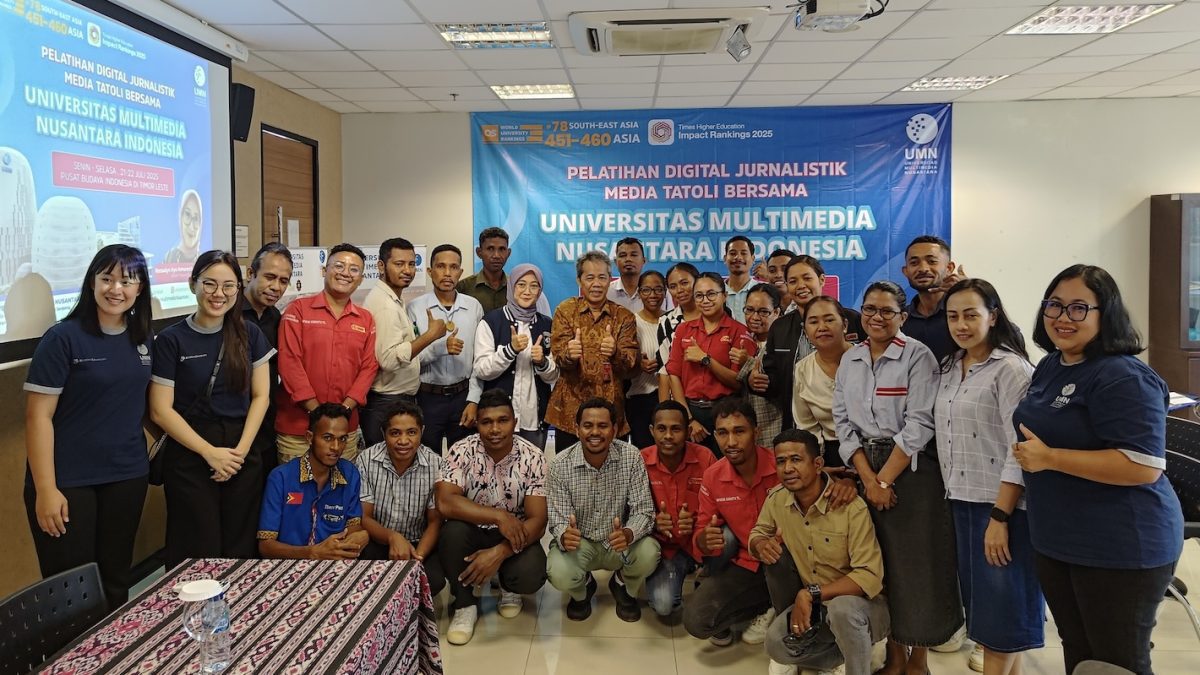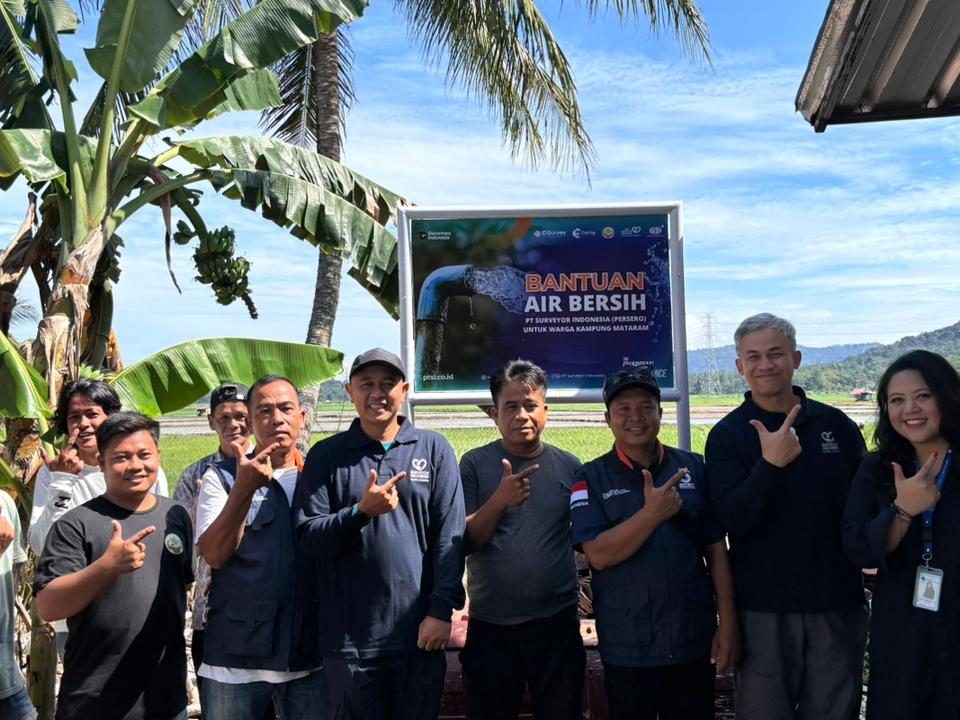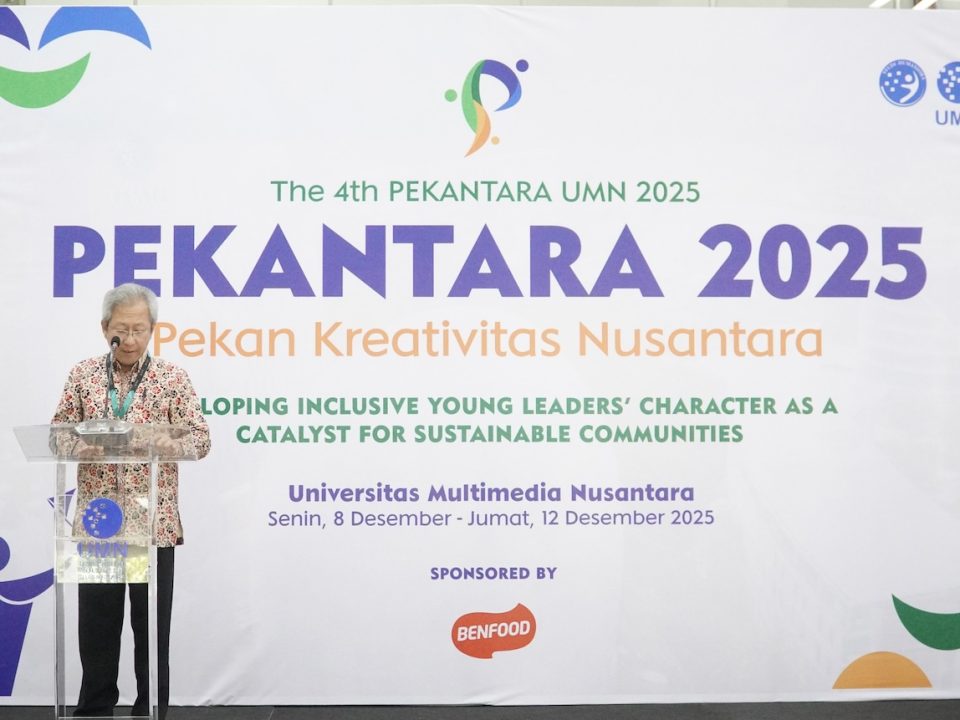
A National Champion, UMN Student Highlights The Reality of Female Journalists in Indonesia
July 21, 2025
UMN Takes Firm Steps on the Global Stage Towards Becoming a World-Class University
July 30, 2025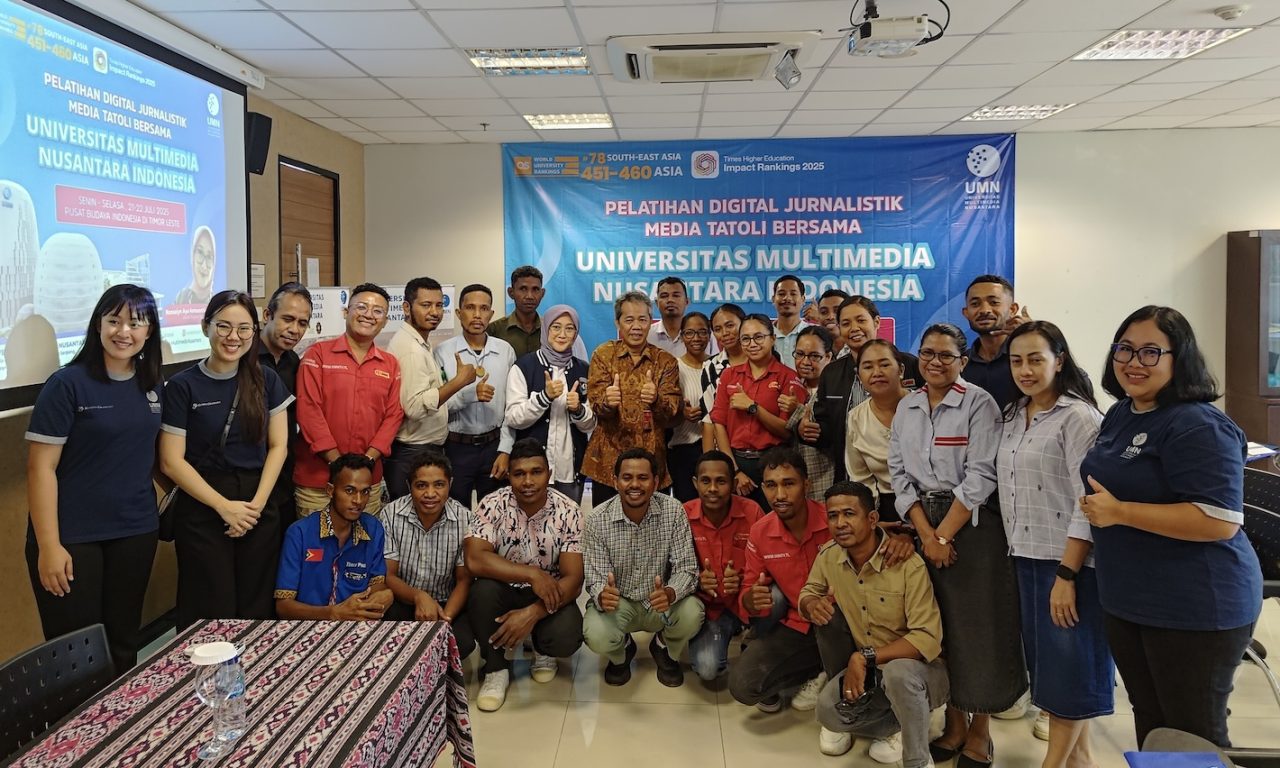
Group photo of the UMN staff, the Indonesian Embassy in Timor-Leste, and Digital Journalism Training participants. (Doc. UMN)
Timor-Leste (July 21, 2025) – Universitas Multimedia Nusantara University (UMN), in collaboration with the Indonesian Embassy in Timor-Leste, conducted a Digital Journalism Training Program for journalists in Timor-Leste. The Digital Journalism Training was aimed at media personnel from TATOLI Agência Noticiosa de Timor-Leste (National News Agency of Timor-Leste), as well as journalists from various local and national media outlets in Timor-Leste. The training focused on enhancing mobile video journalism skills, from planning and production to video editing. The training was conducted by Rossalyn Ayu Asmarantika, S.Hum., M.A., a lecturer in the Digital Journalism Program at UMN.
The Digital Journalism Training for Timor-Leste Journalists was held over two days (July 21-22, 2025) at the Indonesian Cultural Center in Dili City. This activity is part of the collaboration between the Indonesian Embassy in Timor-Leste and Tatoli Agência Noticiosa (National News Agency of Timor-Leste), supported by Universitas Multimedia Nusantara.
The Education and Culture Attaché of the Indonesian Embassy in Timor-Leste attended and opened the event, Prof. Dr. Phil. Ikhfan Haris, M.Sc. During the opening, Prof. Ikhfan expressed his appreciation and hopes for the training program for journalists, which is being held for the first time.
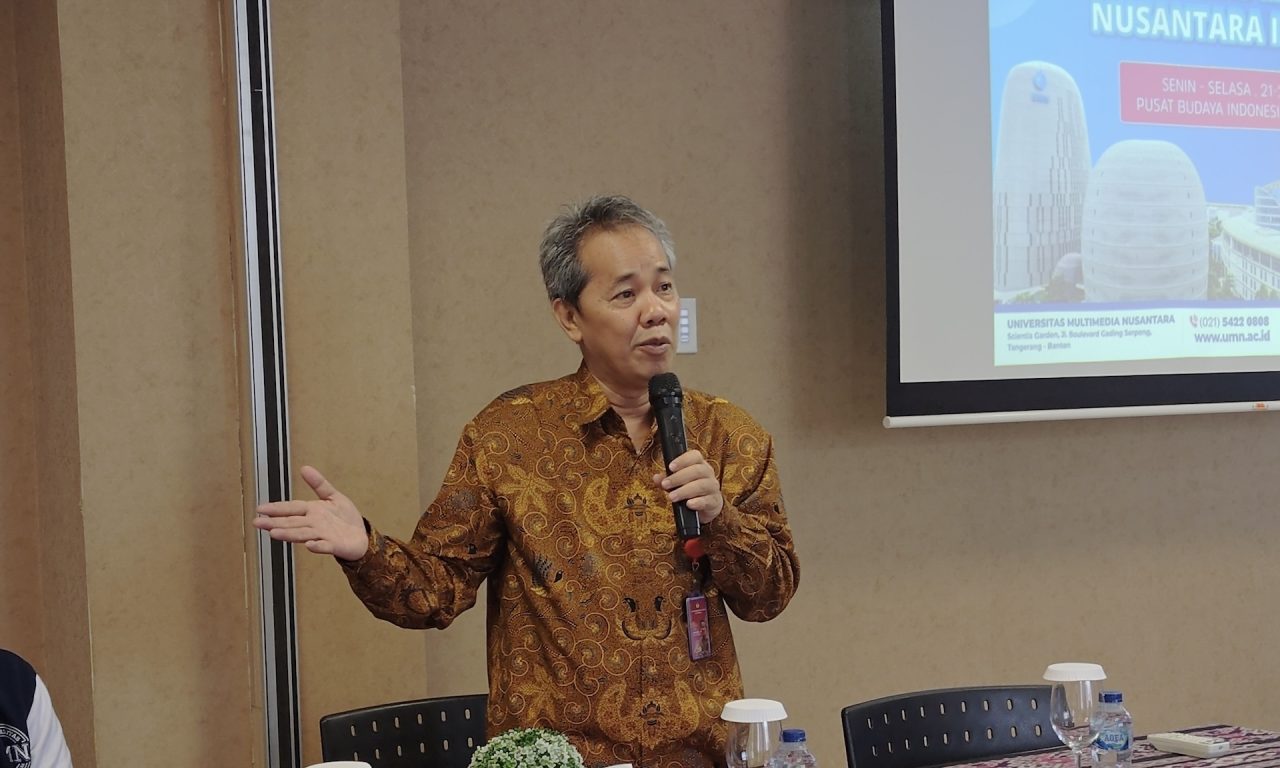
Ikhfan at the opening of the digital journalism training program. (Doc. UMN)
“I am delighted that Multimedia Nusantara University has agreed to share its knowledge with our journalist friends. This is an excellent collaboration; we have been working on it for two months, and this collaboration is a request from the government to improve the quality of media, one of which is mobile journalism. From here, journalists can become more independent in their work, from writing, reporting, taking photos, and also how journalists use smartphones as their tools,” Prof. Dr. Phil. Ikhfan Haris, M.Sc., the Education and Culture Attaché of the Indonesian Embassy in Dili, Timor-Leste, said.
Ikhfan hopes this training will provide journalists with new knowledge, given that UMN is a university under Kompas Gramedia. This is a source of confidence for Ikhfan. In the future, UMN will also officially collaborate with the Press Council in Timor-Leste, and it is hoped that journalists will be encouraged to pursue further education at UMN.
The training was conducted by Rossalyn Ayu Asmarantika, S.Hum., M.A., a lecturer in the Digital Journalism Program at UMN, who also has experience as a broadcasting journalist at national radio and television stations in Indonesia. Through this activity, Rossalyn shared her technical and academic expertise regarding implementing Mobile Journalism (MoJo).
According to Rossalyn, Mobile Journalism can be a massive opportunity for journalists, especially in Timor-Leste. Not only does it simplify disseminating information, but Mobile Journalism also helps journalists be more optimal and efficient in news production. However, in practice, several media outlets in Timor-Leste have not yet maximized or even implemented the principles of Mobile Journalism.

Rossalyn presenting material on Mobile Journalism. (Doc. UMN)
“Mobile Journalism is a journalistic concept and practice that focuses on using mobile devices, particularly cell phones. In the past, journalists needed a lot of equipment such as television tripods, cables, cameras, or live broadcasting equipment. With Mobile Journalism, a cell phone is sufficient. Many international media outlets are now using Mobile Journalism because smartphone technology is now sufficient and reliable. Given the advancements in smartphone technology, that’s where Mobile Journalism originated,” Rossalyn explained.
Rossalyn also explained how the trend of Mobile Journalism has become very appealing, as it is convenient and aligns with the growing use of social media. Additionally, video-based content is increasingly popular, and many people prefer video-based content. Therefore, it is essential for journalists aiming to create Mobile Journalism products to possess visual thinking skills.
“When creating Mobile Journalism content, we certainly need several skills. Technically, we need the ability to take photos and videos, ideas and content to convey, and most importantly, a journalistic instinct. We must know which information is newsworthy and which is merely passing information. For me, an additional skill required in Mobile Journalism is visual thinking—how we take photos and tell stories through images,” Rossalyn added.
Rossalyn explained the appropriate image capture techniques for Mobile Journalism, including extreme wide shots, wide shots, medium shots, medium close-ups, and extreme close-ups. This is not merely about capturing images but also involves specific meanings and metaphors.
“Extreme wide shots and wide shots are commonly used to depict the situation being conveyed and the image’s composition. Meanwhile, medium shots to close-ups are used to show faces and expressions. Through these shots, we can convey messages visually,” Rossalyn said.
During this digital journalism training, participants also had the opportunity to practice proper photography techniques, and Rossalyn assigned group tasks for the participants to complete. Through these assignments, it is hoped that participants can immediately apply the material covered during the training.
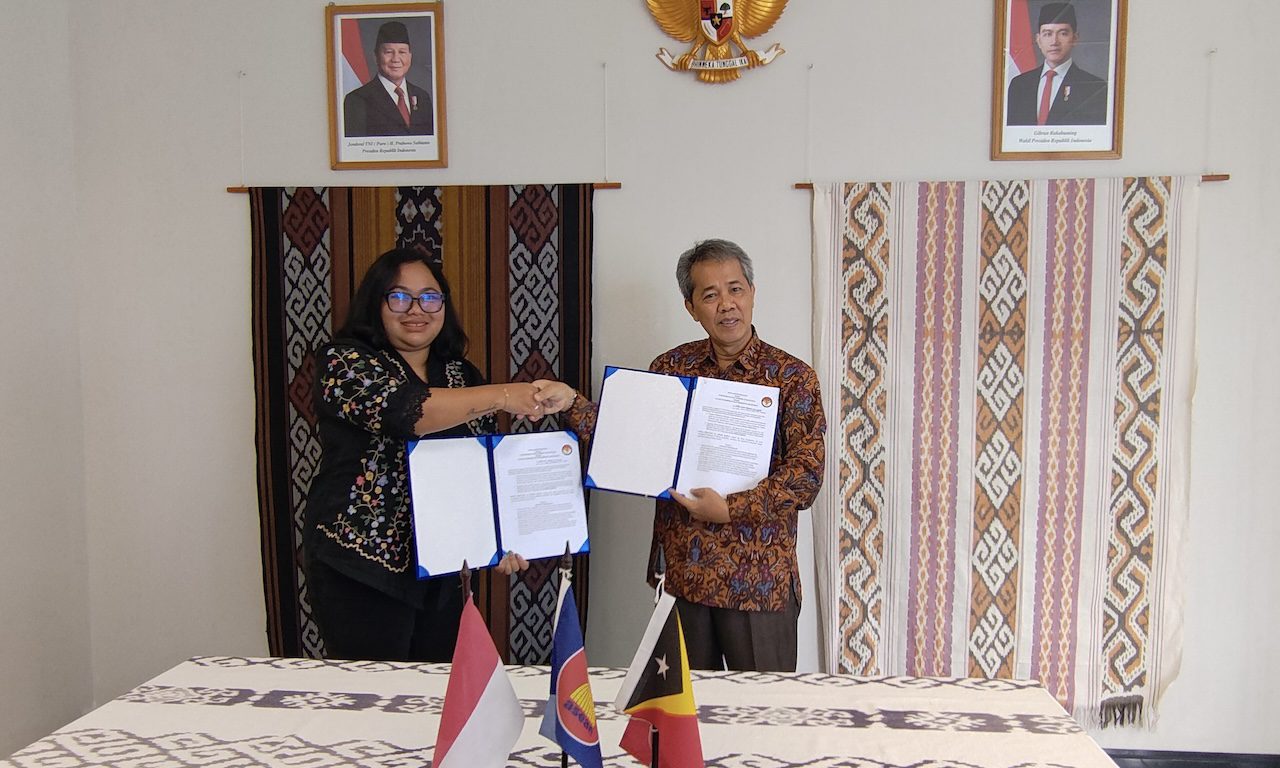
Signing of the MoU between UMN and the Indonesian Embassy in Timor-Leste. (Doc. UMN)
The two-day Mobile Journalism training program concluded with the signing of a Memorandum of Understanding (MoU) between UMN and the Indonesian Embassy in Timor-Leste. The collaboration between UMN and the Indonesian Embassy in Timor-Leste will encompass the Tri Dharma of Higher Education, including joint research, training, educational fairs at schools in Timor-Leste, and cooperation with ministries and industries in Timor-Leste.
The collaboration between Universitas Multimedia Nusantara and the Indonesian Embassy in Timor-Leste will support various Sustainable Development Goals, including SDG 4 (Quality Education), SDG 11 (Sustainable Cities and Communities), and SDG 17 (Partnership for the Goals).
By Rachel Tiffany | UMN News Service
English translation by Levina Chrestella Theodora
Kuliah di Jakarta untuk jurusan program studi Informatika| Sistem Informasi | Teknik Komputer | Teknik Elektro | Teknik Fisika | Akuntansi | Manajemen| Komunikasi Strategis | Jurnalistik | Desain Komunikasi Visual | Film dan Animasi | Arsitektur | D3 Perhotelan , di Universitas Multimedia Nusantara.
